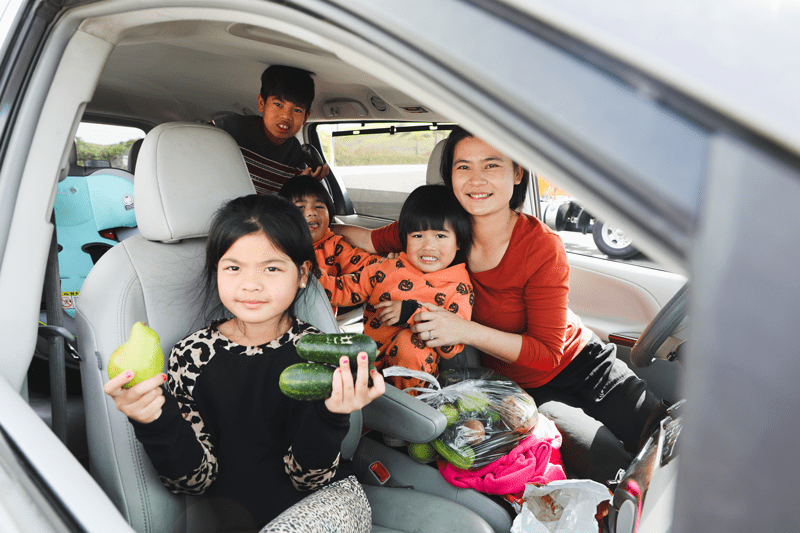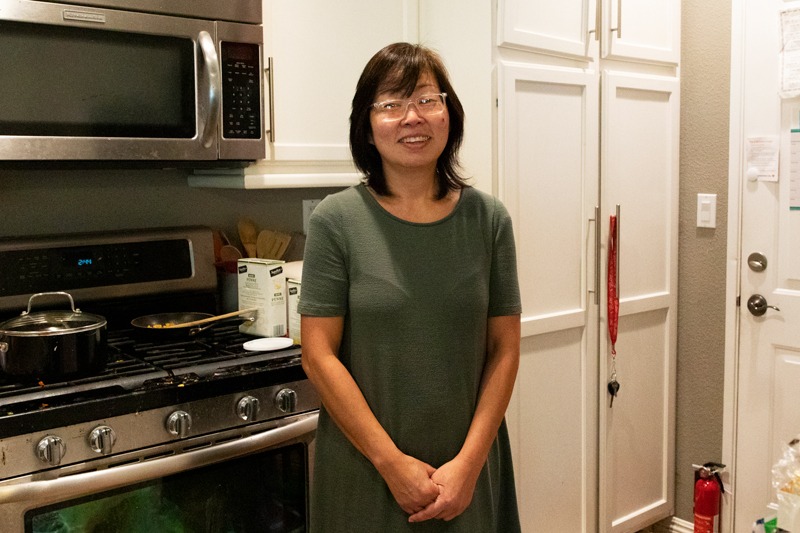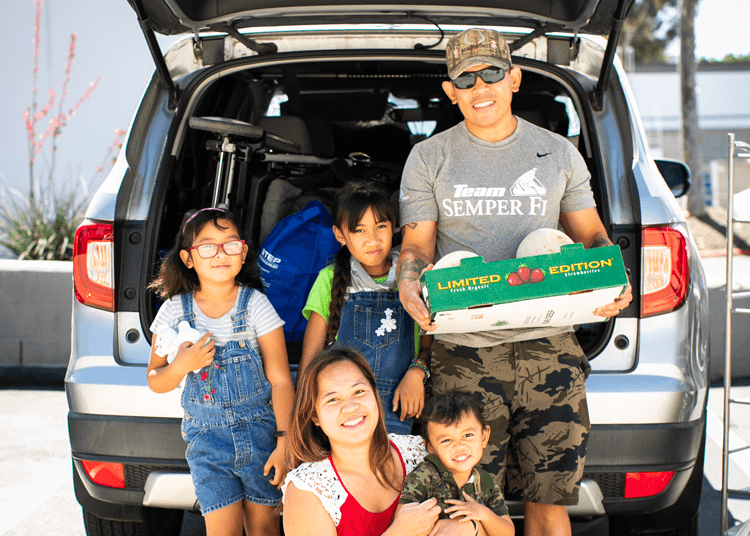Top 5 Myths About Food Insecurity
There are a lot of myths and misunderstandings when it comes to food insecurity. The first key misunderstanding is that food insecurity is different from hunger. Hunger is a physical feeling when you haven’t had enough to eat. In contrast, food insecurity is an economic condition. Someone who is food insecure does not consistently have enough food to lead a healthy life. It is a complex issue that can negatively impact physical, emotional, social, and mental well-being. According to Feeding America’s Map the Meal Gap 2023 research, nearly 300,000 people in San Diego County are food insecure. You may be surprised to find out someone in your life is food insecure, as the signs are not always clear.
We’ve gathered a list of the top five myths about food insecurity to shed some light on this issue and why your help is so critical.
Food Insecurity Myth #1: Only people who are unhoused need food assistance.
The connection between houselessness and food assistance is one of the most common myths we hear. If only people who were unhoused needed resources, the number of people we serve would be about 8,000 people, according to the #WeAllCount Point-in-Time Count from 2022.
In reality, Feeding San Diego provided over 35 million meals in FY22. Our network of food banks supports hundreds of thousands of individuals throughout the county. Most of the people in our food lines are housed and have cars. However, fixed costs, such as rent and electricity, as well as food prices, make it challenging to afford nutritious food on a regular basis. Many families face the choice between paying their rent and filling their fridges. Our services frequently help people stay in their homes.
Food Insecurity Myth #2: Only people who are unemployed need food assistance.
With the high cost of living in San Diego, employment does not guarantee food security. According to Consumer Affairs, San Diego is the third most expensive city in the United States. The minimum wage in California is $15, and the average renter makes $26.69 an hour. In contrast, the National Low Income Housing Coalition estimates that an individual would need to have an hourly wage of $42.92 to afford a two-bedroom apartment in San Diego County. Essentially that means they would need 1.6 full-time jobs to afford a two-bedroom at a fair market rate.
In addition to the high cost of rent, inflation has caused the price of necessities, including food, to rise rapidly. Many San Diegans, even those making above minimum wage, may find their paycheck simply doesn’t go as far as necessary. When that happens, they may turn to hunger-relief organizations, like Feeding San Diego, to fill in the gap and ensure they can access the food they need.
Food Insecurity Myth #3: You can tell when someone is food insecure just by looking at them.
It’s practically impossible to look at someone and know whether they are food insecure. More than half of Americans live paycheck to paycheck. They may purchase a nice car or new clothes when financially secure. Then, illness, job loss, or another event can change everything. Suddenly, they can’t afford groceries. In short, material possessions do not always indicate whether someone is financially stable.
We spoke to Robyn, a single mom of two, about how unexpected life events disrupted her food stability. Her son has autism, making it difficult for her to find steady work, and her ex can’t provide consistent support.
Robyn in her kitchen
“I thought I was okay,” she said. “I had a degree, and I had work experience. Surely I should be able to provide for my kids. But there are just things you don’t plan on in life, and when you have to meet them, sometimes you just don’t have the resources to do so.”
By attending food distributions, Robyn can spend more time with her kids without the overwhelming stress of how to put food on the table.
Food Insecurity Myth #4: People who are overweight can’t be food insecure.
As with myth #3, you can’t look at someone and use their appearance to judge whether they are experiencing food insecurity. A 12-state study revealed that those who were food insecure had 32 percent greater odds of being obese than those who were food secure. However, this doesn’t mean that food insecurity causes obesity. Both food insecurity and obesity often stem from the same issue: low income.
According to the Food Research & Action Center, food insecure and low-income people can be especially vulnerable to obesity because they often face unique challenges, including:
- Limited resources
- Lack of access to healthy, affordable foods
- Cycles of food deprivation and overeating
- High levels of stress, anxiety, and depression
- Fewer opportunities for physical activity
- Greater exposure to marketing of obesity-promoting products
- Limited access to healthcare
Basically, an individual’s physical appearance can’t tell you whether they need food assistance. The complicated relationship between food insecurity and obesity makes it even more important that everyone can access healthy, nutritious foods like those offered at Feeding San Diego’s food distributions.
Food Insecurity Myth #5: People cheat the system to get food they don’t really need.
The myth that people are cheating food assistance systems is one of the most damaging on this list. In reality, the greater concern is how many individuals who need help aren’t asking for it. From speaking to those who attend our distributions, we know many struggle to ask for help. We heard about this from Leo, a disabled vet who attended one of our food distributions.
Leo with his wife, Flora, and their three kids, Athena, Leah, and Leonidas
“I’m a retired marine. It was hard for me to accept help,” Leo shared. “I’m a 100% disabled vet, and it’s hard for me to get a job because I’m either in pain or have three to five appointments at the VA every week. Before, I was hard-headed in seeking help, but now we do need it because everything is just so expensive. We’re not asking much. We just need some help until everything cools down and gets better.”
See for Yourself
There are hundreds of stories like Robyn and Leo’s in our community. We invite you to volunteer at one of our food distributions to see firsthand how our resources make a difference in the lives of those facing food insecurity. You can sign up for a shift on our website.











